
Energising Britain


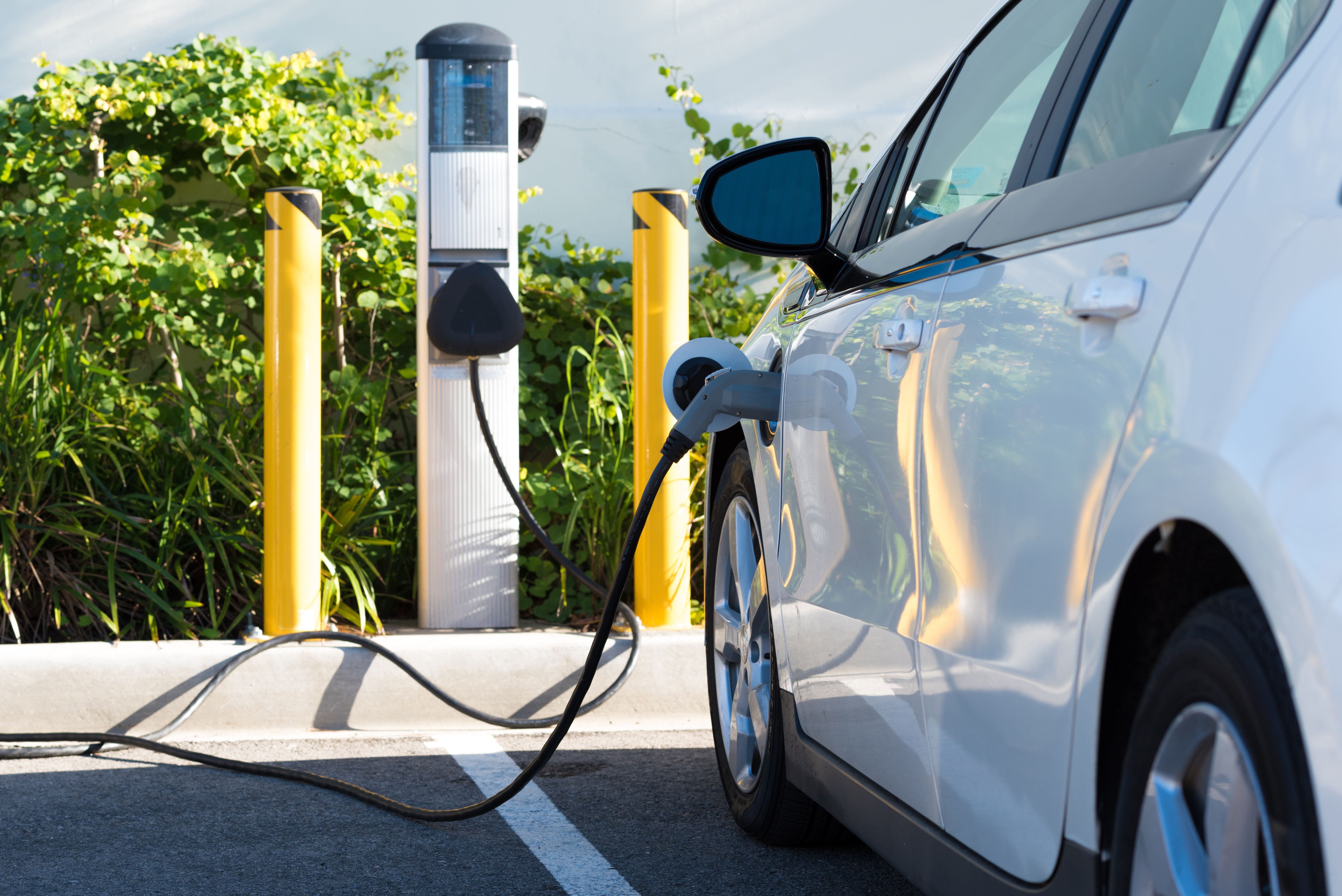
When you’re travelling to another continent there are few things more irritating to forget than a plug adapter. Thankfully, they’re relatively easy to buy, even if it means putting holiday plans on hold for half an hour.
But what if rather than having the wrong plug to charge a phone abroad, you found yourself unable to plug in your electric vehicle (EV) on your own street?
It’s a situation that could soon become a reality as different vehicle manufacturers release new models and different energy and charging companies expand their recharging networks, not all of which can connect with each other.
Fragmentation among charging networks, confusing cables and meeting increased electricity demand are all challenges the UK needs to solve to enable all-electric vehicles and cut transport emissions.
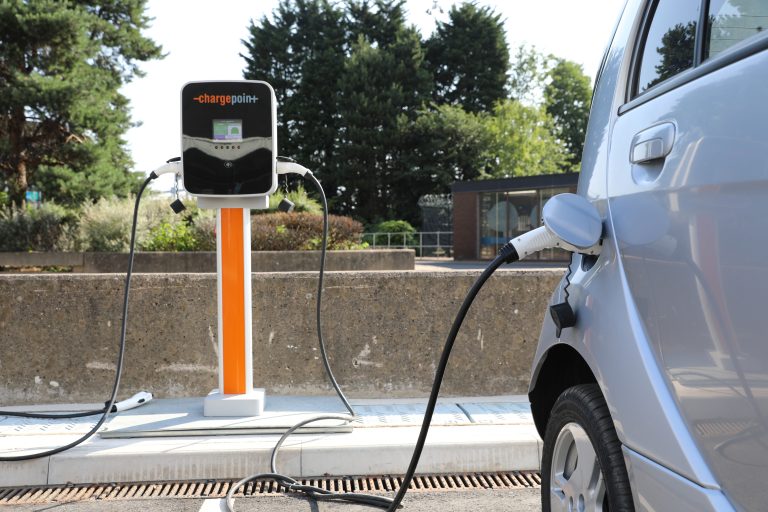
EV charging at Drax Power Station, North Yorkshire
Around the country there are more than 17,600 public charge points for EVs to power up at, offered by 35 different charging networks. While some offer connectors that plug straight into cars, others require motorists to use their own cables and connect the ports.
But, similarly to how different models of smartphone often require a different type of charging cable, not all EVs can plug into to the same chargers or use the same protocol to link their batteries to the charging system. It’s something that, without standardisation, could lead to fragmentation and become a major pain point for electric vehicle owners, as well a barrier to more widespread adoption.
Currently car makers in Germany are united in backing a what’s known as combined charging system (CCS), but Japanese manufactures support making CHAdeMO (standing for Charge de Move) the standard protocol, which requires a different type of connecting cable to CCS.
Tesla uses its own network Supercharger points, and although its cars can recharge at other charge points (if the driver has their adapter with them), other manufacturers’ vehicles can’t yet recharge at Tesla Superchargers.
Then there’s China. The world’s largest market, where 200 million EVs are expected to be on the roads by 2040, uses an entirely different, GB/T system. Keen to avoid missing out on such a lucrative market Tesla has added a BG/T charging port to its model X vehicles.
Currently, Europe uses the same charging infrastructure as the UK and the larger charging networks operate the same service across the continent. As is the case when setting out on a long drive anywhere though, it’s worth checking where charge points are before setting off.
It may be confusing but it’s still relatively early days for the EV charging industry, and like VHS vs Betamax, there could yet be consolidation across the global market.
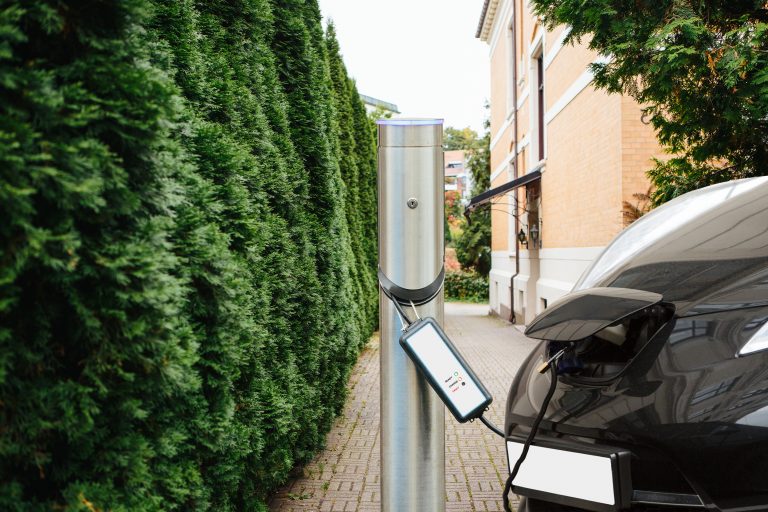
Expanding where drivers can recharge is key to bringing more EVs onto roads, and in efforts to help grow this, the government has put forward a proposal that all new homes, business and street lights should offer charging points. However, all points do not charge equally and are divided into slow, fast and rapid.
Home charging will be an important part of EV infrastructure, with overnight charging seen as key to managing the increased electricity demand created by substantial EV adoption. It is, however, the slowest and can take six to 12 hours to fully recharge a vehicle.
Fast chargers are those normally found on streets or public destinations, like car parks. For people unable to run a cable from their home to their EV, these will be crucially important, however, they typically require drivers to bring their own connection cable to hook up and can take between two and five hours to fully recharge, depending on the vehicles.
By far the fastest method of EV charging is through rapid charging, which is most-commonly found at motorway service stations. These charge points provide connectors for drivers to plug in and can recharge an EV to 80% in just 30 minutes.
Connector fragmentation, however, could cause some issues at these sites. The likely solution – for the time being – is offering multiple different options, such as at Shell’s recharge points, which house both rapid CCS and CHAdeMO connections, similarly to how traditional pumps might offer both petrol and diesel.
As the UK heads towards the 2040 deadline for the end of new petrol and diesel vehicle sales, having the necessary infrastructure to support EV adoption is a key issue to address, according to PwC.
Major companies are making inroads towards addressing this need, with oil giant BP acquiring Chargemaster, the country’s largest charging network in June. The government is also encouraging further growth through a £400 million fund to be allocated to companies building charging infrastructure.
In addition to allowing more EVs to recharge, smart-grid technology will play an important role in managing how so many are charged without causing surges in demand, or tripping out home or business premises circuits. This can also offer opportunities, such as vehicle-to-grid storage, that enable the National Grid to treat connected EVs like batteries at times of stress.
Electric vehicles are still beginning to appear en mass in the UK. However, their potential to reduce transport emissions makes them an important investment for the government, vehicle manufacturers and energy companies building charging networks. Spreading an understanding of how to charge EVs will help drive returns on those investments.

Railways in Great Britain today are often seen as unreliable or chaotic, yet they remain a vital part of the lives of the population and the economy of the country.
When rail transport first arrived in earnest in the 19th century, it suddenly allowed goods from around the world, as well as people, to quickly cross the country. It reshaped perceptions of the country’s geography, unlocked the population and accelerated industries.
Over time, however, the role of the railways has diminished, owing largely to the massive rise in car ownership and the shifting of freight onto the road. But that is not to say it has completely lost its importance.
With 6,000 trains passing through Drax Power Station every year, rail is still integral to Drax and the region around it. In fact, since the very first introduction of the railways to the region it has played a major part in shaping the landscape.
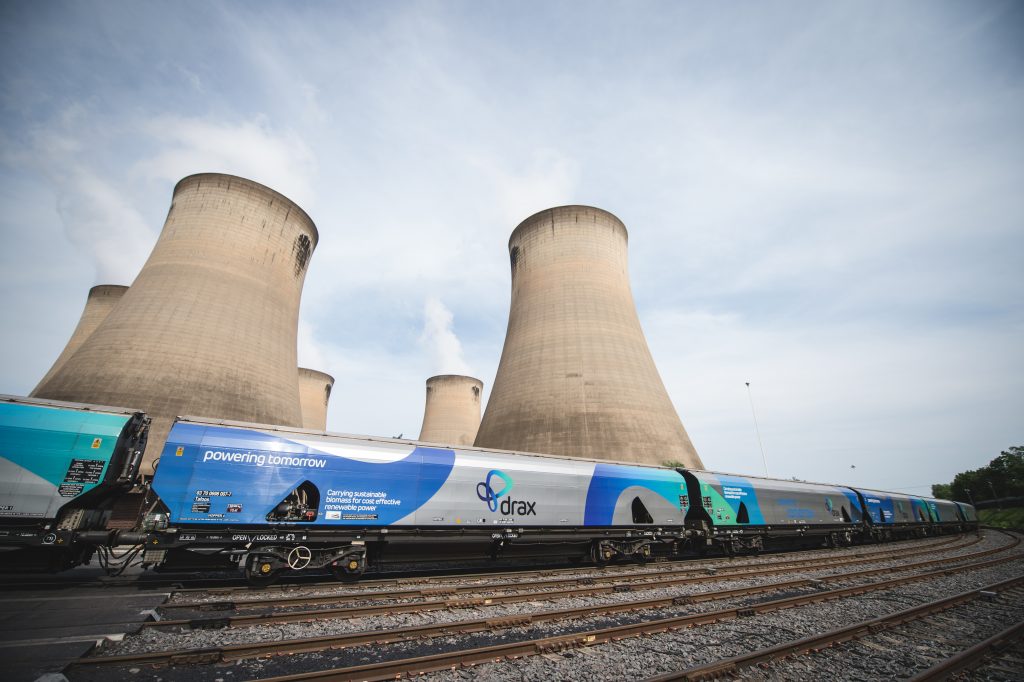
Before the construction of the power station or nationalisation of the railways, Drax village was well-connected, with two different railway lines running through it: the North Eastern Railway (NER) Selby to Goole line, and the Hull and Barnsley Railway’s Doncaster to Hull line.
Each of these lines ran through a different station with NER calling at Drax Hales Station while Hull and Barnsley called at Drax Abbey Station. But, following nationalisation and British Rail’s modernisation plans, Drax Abbey Station, which had closed to passengers in 1931, closed to goods traffic in 1959. Drax Hales Station followed suit in 1964 when it was closed as part of what became known as the Beeching Axe.
“British Rail chairman Richard Beeching famously carried out a review of Britain’s railways in the 60s and as a result closed vast quantities of – what he considered – uneconomical lines,” explains Andrew Christian, FGD & By-products Section Head at Drax Power Station and expert on the area’s history. “At that time oil was cheap, people were increasingly using cars and motorways were being constructed. Nobody really foresaw the rail demand that would be needed in the future to serve the power station.”
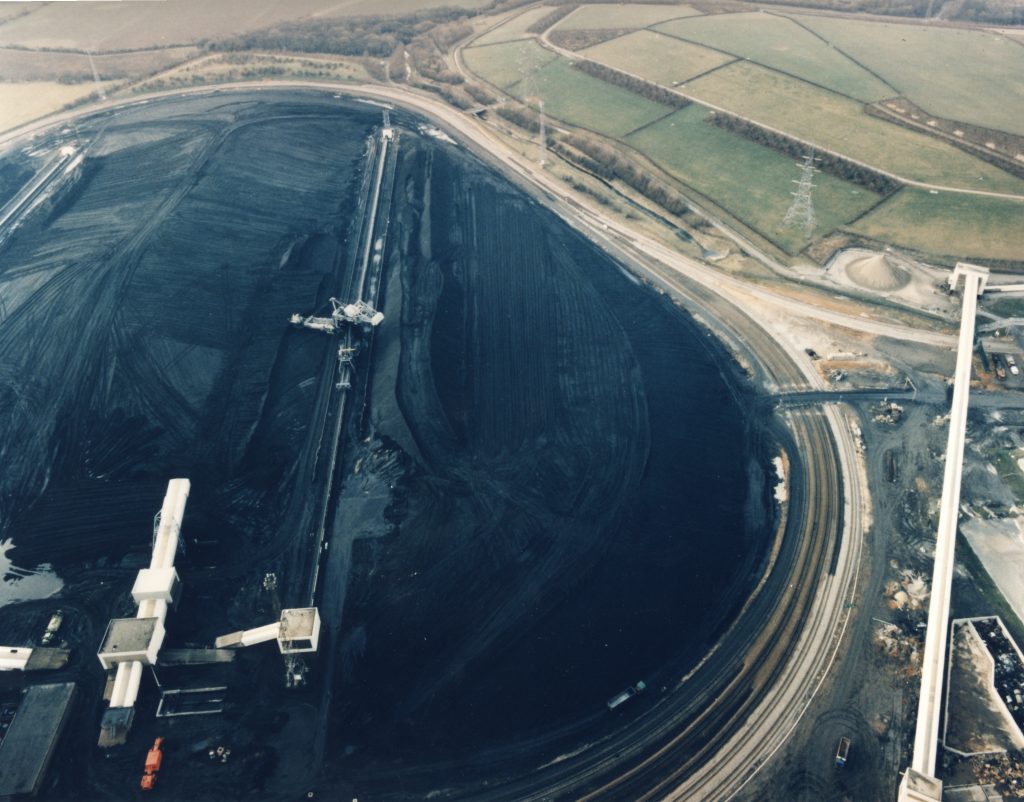
In the 1960s and 70s, with the planning and construction of Drax Power Station underway, there was a new need for railways in bringing coal from the new Selby coalfield. This resulted in the reopening of a closed part of the Hull and Barnsley line for four miles from a reinstated junction at Hensall. Known as Hensall Junction it was renamed Drax Power Station Branch Junction and later shorted to Drax Branch Junction.
A rail system known as a ‘MGR loop’ was installed on the power station grounds, which allows trains to loop around the station and deposit coal – today also wood pellets – without stopping.
The ‘merry-go-round’ trains as they are known, were originally made up of 40, four-wheeled merry-go-round (MGR) hopper wagons. These were much smaller than the wagons that carry biomass from ports to power stations today, and more than 11,000 MGRs where built to serve coal power stations around Great Britain.
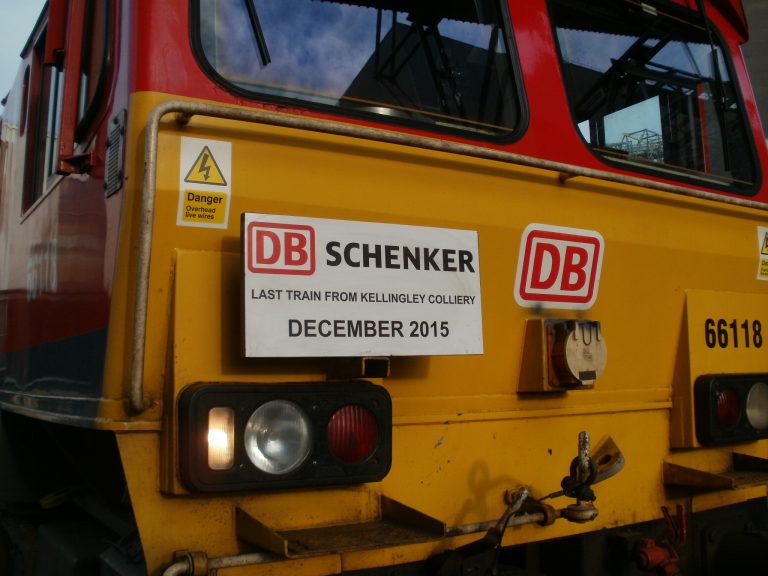
Photo by Andrew Brade, Railway Engineer at Drax Power Station
The open-topped wagons were each capable of carrying 33 tonnes of pulverised coal, which was automatically released thanks to a piece of machinery alongside the track colloquially known as ‘Daleks’ thanks to their resemblance to the Dr Who villain.
But as the power station began to change and evolved to fit the modern world, so too did the railway serving it.
The original Drax rail loop was a single track, with three coal unloading points. By 1993 there was 14.5 km of track with 27 sets of points and crossings allowing trains to switch rails, thanks to the double tracked loop and extra tracks laid to serve traffic taking limestone in and gypsum out from the power station. This was further expanded with the introduction of biomass and a new double track and unloading facility in 2013.
The biomass trains are specially designed to keep compressed wood pellets dry and they are much longer than their MGR predecessors. At 18.2 meters long, their capacity is 30% greater than a coal wagon. It means the 23-wagon trains bringing biomass to the power stations from Tyne, Hull, Immingham and Liverpool’s ports are a quarter of a mile long.
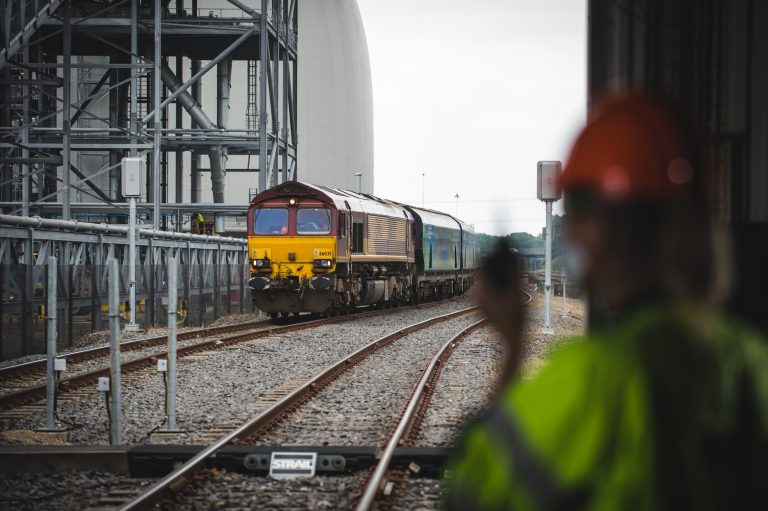
It might be a far cry from the heyday in which the railways crisscrossed the region, but they remain a vital part of the area. And while the area’s original lines are now 50 years dormant, their remnants are still visible in the lasting impact they’ve left on the surrounding landscape.
Many of the embankments and bridges found in and around Drax stem from those first railway lines, while much of the A645 road that was constructed in the early 1990s runs along the track bed of NER’s route to Goole.

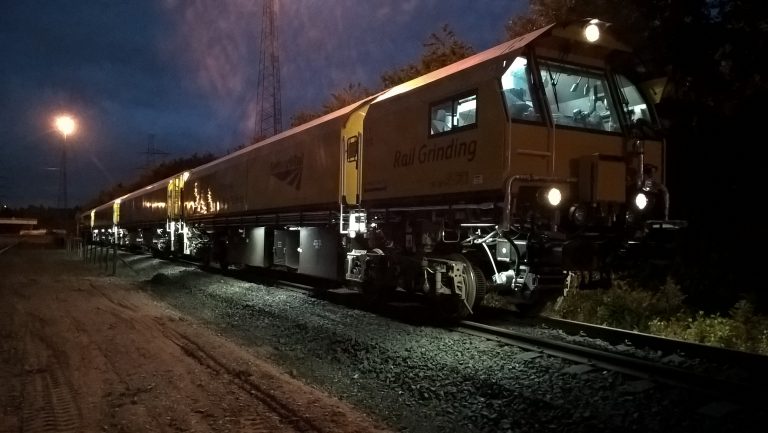
Photos by Andrew Brade, Railway Engineer at Drax Power Station
The trains might not stop in Drax Village anymore, but they remain a vital part of the landscape, and how it’s powered.
Northern Powerhouse Minister Jake Berry was in Yorkshire on 5 July 2018 to unveil the first Drax freight wagons with ‘Northern Powerhouse’ branding to deliver biomass to the power station. Read more.
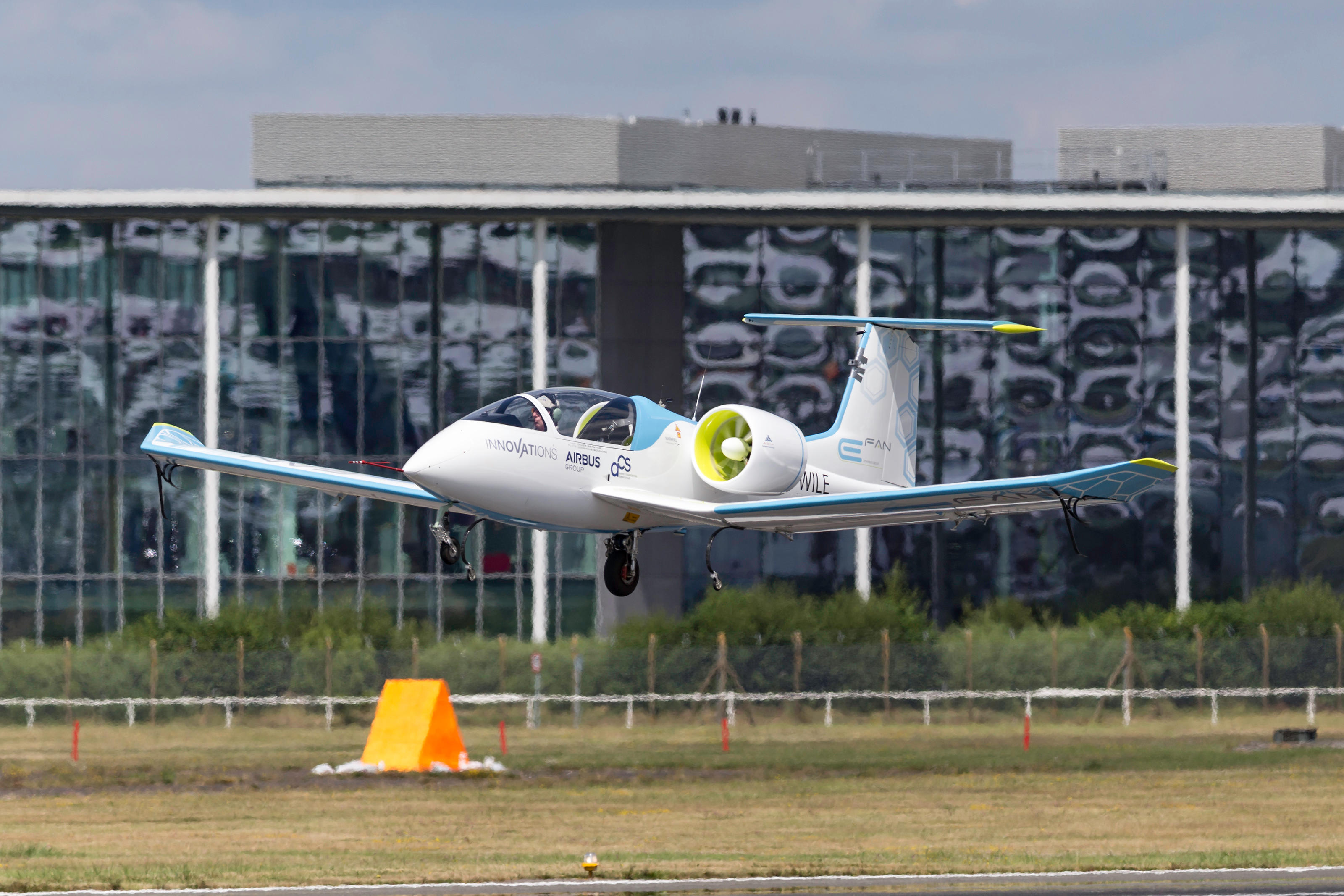
With rapid technological improvements and falls in battery prices, improving performance and reducing the cost, experts predict that by 2050, 90% of new-build cars will be powered by electricity.
However, it’s not only roads where transport is decarbonising; electricity may soon power more of the world’s trains, plus its planes and boats.
The electrification of the rail industry has arguably been in the making for a lot longer than EVs but there’s still progress to be made. Trains are already one of the most-efficient modes of long-distance transport, and Network Rail claims electric models’ carbon emissions are 20% to 35% lower than diesel trains. Electric trains also accelerate and brake faster than diesel-powered models, and cause less wear to tracks.

Electrified trains are already commonplace in many parts of the world – Japan’s famously fast and reliable Shinkansen railways are electric. Meanwhile in the UK, less than 50% of the rail network is electrified, with Transport Secretary Chris Grayling’s recent ‘pause’ on development casting doubts on previous ambitious plans to electrify 850-miles of track.
Nevertheless, advancements are still being made to enable the sector to utilise solar energy as an alternative to the national power grid. The concept would prove cost effective and reduce the carbon footprint of trains even further.
According to a report by climate change charity 10:10 and researchers at Imperial College’s Energy Futures Lab, rail companies could cut their annual running costs by millions of pounds through installing their own trackside solar panels to power electric trains directly. With companies spending around £500 million a year on power, the savings on self-generation would enable them to cut fares for passengers, as well as emissions.
Of all transport modes, air travel has made the least progress in electrification but there’s hope yet. Airbus, Rolls-Royce and Siemens recently teamed up to develop the technology needed to create electrically-powered aircraft. The companies plan to fly a demonstrator aircraft with one of its existing jet engines replaced by an electric unit in 2020.
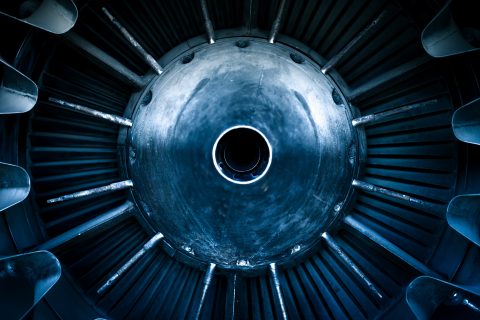
Paul Stein, chief technology officer at Rolls-Royce, said: “Aviation is the last frontier of the electrification of transport. It could lead to a step change in the way we fly with greater efficiency and less noise.”
These proposed hybrid-electric aircraft are not powered by on-board batteries like EVs but with a gas turbine that generates electricity to drive the propellers. This could reduce fuel consumption by up to 10%, predicted Mark Cousin, head of flight demonstration at Airbus.
Moving to electric aircraft would also help the aviation industry meet EU targets of a 60% reduction in emissions of carbon dioxide (CO2) by 2020, as well as 90% less nitrogen oxides and a noise reduction of around 75%.
UK-based airline EasyJet also announced it could be flying electric planes within a decade and is teaming up with US firm Wright Electric to build battery-powered aircraft.
According to EasyJet, the move would enable battery-powered aeroplanes to travel short-haul routes such as London to Paris and Amsterdam, and Edinburgh to Bristol. Wright Electric is aiming for an aircraft range of 335 miles, which would cover the journeys of about a fifth of EasyJet passengers. The challenge comes in making lithium-ion batteries light and safe enough for the air.
The airline said this was the next step in making air travel less harmful for the environment, after cutting carbon emissions per passenger kilometre by 31% between 2000 and 2016. Wright Electric claims that electric planes will save up to 15% in fuel burn and CO2 emissions, be 50% quieter and 10% cheaper for airlines to buy and operate, with the cost saving potentially passed on to passengers.
There’s a lot of buzz coming out of the maritime industry too. Every year marine transport emits 1,000 million tonnes of CO2, which is why the International Maritime Organization (IMO) has agreed that a reduction of 50% should come by 2050 compared with 2008 levels. Although the deal fell short of more ambitious targets preferred by those ranging from the European Union to environmental NGOs, the IMO did also commit to pursue efforts toward phasing out CO2 emissions entirely.
As Paris Agreement goals to cut carbon dioxide emissions loom, businesses around the world are innovating.

Small fleets of battery-powered boats designed for fjords and inland waterways in Norway, Belgium and the Netherlands are preparing to set sail, including some able to run autonomously without a crew.
Dutch company Port-Liner is also gearing up to launch the first fully-electric, emission-free barges in Europe. Dubbed ‘Tesla’ ships, Port-Liner Chief Executive Officer Ton van Meegen claims these barges would be the first in the world to sail on carbon-neutral batteries. The first six barges alone are expected to remove 23,000 trucks from the roads annually in the Netherlands, replacing them with zero-emission methods of transport.
China also recently launched an electric cargo ship to haul coal which, whilst not doing much for its ambitions to cut pollution, will at least eliminate shipping emissions from diesel engines. Electric ships may not yet be the norm globally but progress is underway to cut the 2.5% of global greenhouse emissions that result from the maritime transport industry.
Once a far-flung fantasy in some areas, electrified transport is fast becoming a reality. EVs and rail are leading the way, but it’s clear the electric transport revolution has a long way to travel.
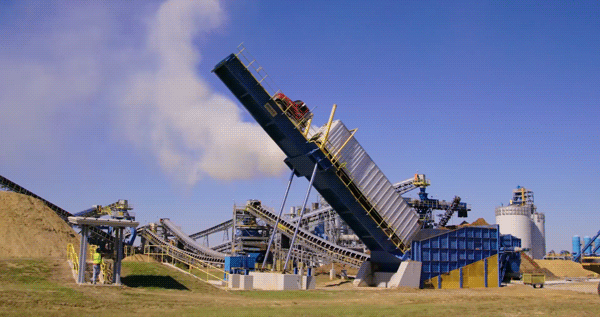
A truck arrives at an industrial facility deep in the expanding forestland of the south-eastern USA. It passes through a set of gates, over a massive scale, then onto a metal platform.
The driver steps out and pushes a button on a nearby console. Slowly, the platform beneath the truck tilts and rises. As it does, the truck’s cargo empties into a large container behind it. Two minutes later it’s empty.
This is how you unload a wood fuel truck at Drax Biomass’ compressed wood pellet plants in Louisiana and Mississippi.
“Some people call them truck dumpers, but it depends on who you talk to,” says Jim Stemple, Senior Director of Procurement at Drax Biomass. “We just call it the tipper.” Regardless of what it’s called, what the tipper does is easy to explain: it lifts trucks and uses the power of gravity to empty them quickly and efficiently.
The sight of a truck being lifted into the air might be a rare one across the Atlantic, however at industrial facilities in the United States it’s more common. “Tippers are used to unload trucks carrying cargo such as corn, grain, and gravel,” Stemple explains. “Basically anything that can be unloaded just by tipping.”
Both of Drax Biomass’ two operational pellet facilities (a third is currently idle while being upgraded) use tippers to unload the daily deliveries of bark – known in the forestry industry as hog fuel, which is used to heat the plants’ wood chip dryers – sawdust and raw wood chips, which are used to make the compressed wood pellets.
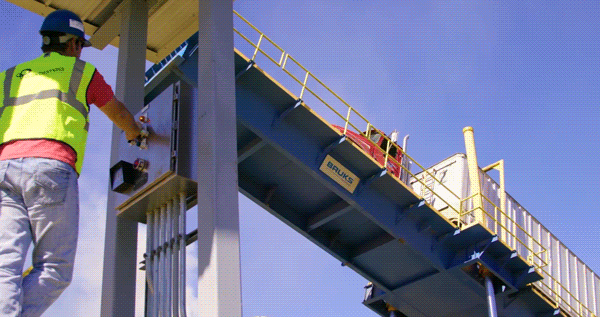
The tipper uses hydraulic pistons to lift the truck platform at one end while the truck itself rests against a reinforced barrier at the other. To ensure safety, each vehicle must be reinforced at the very end (where the load is emptying from) so they can hold the weight of the truck above it as it tips.
Each tipper can lift up to 60 tonnes and can accommodate vehicles over 50 feet long. Once tipped far enough (each platform tips to a roughly 60-degree angle), the renewable fuel begins to unload and a diverter guides it to one of two places depending on what it will be used for.
“One way takes it to the chip and sawdust piles – which then goes through the pelleting process of the hammer mills, the dryer and the pellet mill,” says Stemple. “The other way takes it to the fuel pile, which goes to the furnace.”
The furnace heats the dryer which ensures wood chips have a moisture level between 11.5% and 12% before they go through the pelleting process.
“If everything goes right you can tip four to five trucks an hour,” says Stemple. From full and tipping to empty and exiting takes only a few minutes before the trucks are on the road to pick up another load.
Using the power of gravity to unload a truck might seem a rudimentary approach, but it’s also an efficient one. Firstly, there’s the speed it allows. Multiple trucks can arrive and unload every hour. And because cargo is delivered straight into the system, there’s no time lost between unloading the wood from truck to container to system.
Secondly, for the truck owners, the benefits are they don’t need to carry out costly hydraulic maintenance on their trucks. Instead, it’s just the tipper – one piece of equipment – which is maintained to keep operations on track.
However, there is one thing drivers need to be wary of: what they leave in their driver cabins. Open coffee cups, food containers – anything not firmly secured – all quickly become potential hazards once the tipper comes into play.
“I guess leaving something like that in the cab only happens once,” Stemple says. “The first time a trucker has to clean out a mess from his cab is probably the last time.”
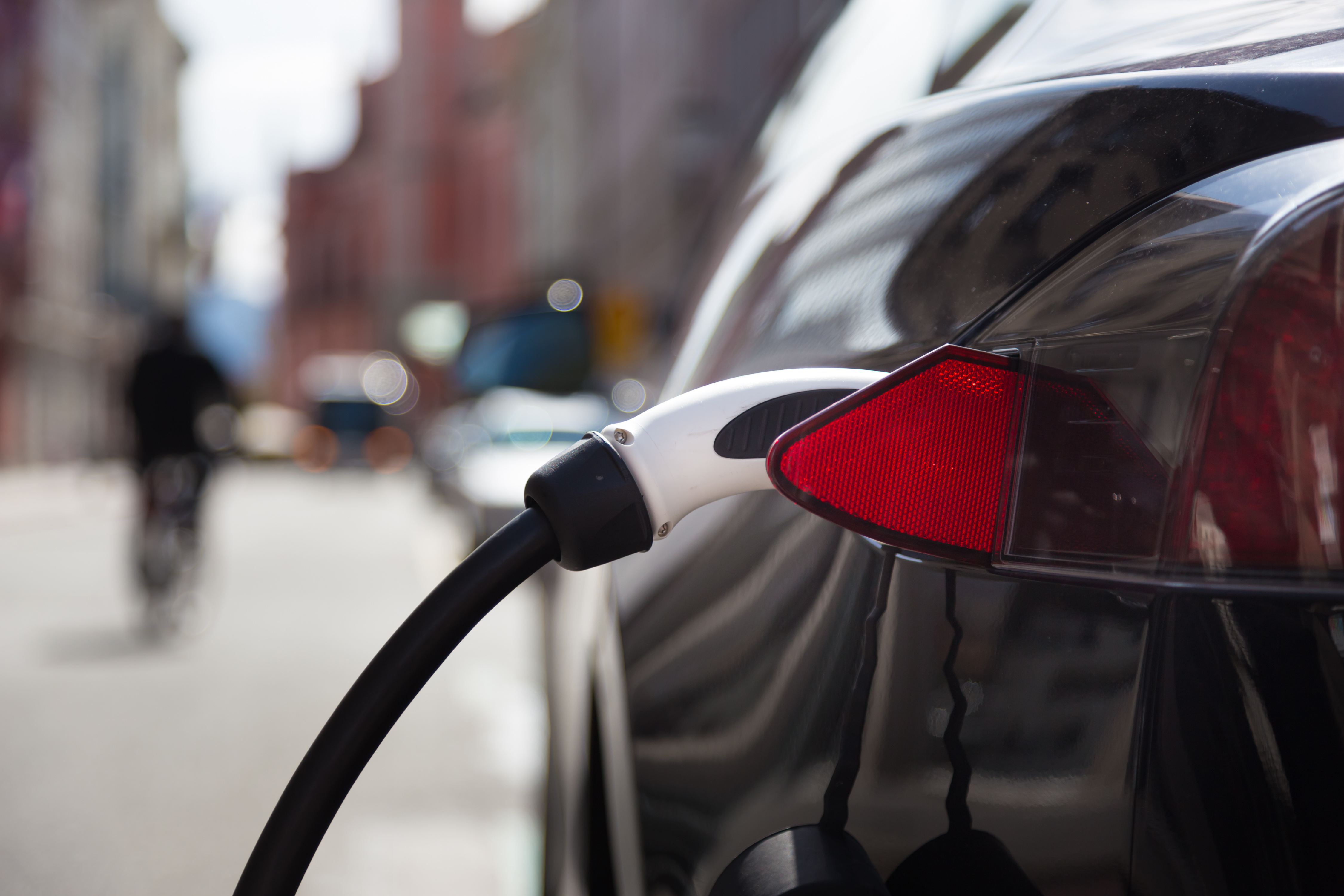
All great technological innovations need infrastructure to match. The world didn’t change from candles to lightbulbs overnight – power stations had to be built, electricity cables rolled out, and buildings fitted with wiring. The same is true of electric vehicles (EV).
Think of the number of petrol stations lining the UK roads. If EVs continue their rise in popularity, the country will need electric car-charging facilities to augment and then replace these petrol stations.
This could mean big extensions of electricity grid infrastructure, both in the building of new power generation capacity to meet demand, and in the extension of the networks themselves.
In short, it could mean a significant change in how electricity is used and supplied.
In 2013, only 3,500 of newly registered cars in the UK were plug-in electric or hybrid EVs. In 2016, that number jumped to 63,000. Their use is rising rapidly, but the lack of infrastructure has kept a cap on the number of EVs on UK roads. That is starting to change.
As of 2019, all new and refurbished houses in the EU will have to be fitted with an electric car charging point, according to a draft directive announced by Brussels. The UK will probably no longer be an EU member by the time the directive comes into effect, but nevertheless, the UK government is pursuing its own ways to account for the rise of EVs. It has pledged more than £600 million between 2015 and 2020 to support ultra-low-emission vehicles – £38 million of this has already been earmarked for public charging points.
There are more innovative responses to EV rise, too. Nissan, in partnership with Italian energy provider Enel, has announced it will install around one hundred ‘car-to-grid’ charging points across the UK. With their innovative V2G technology, cars plugged into these sites will be able to both charge their batteries and feed stored energy back to the National Grid when necessary. So when there is a peak in demand, the Grid could access the cars’ stored energy to help meet it.
The total capacity of the 18,000 Nissan electric vehicles currently operational on UK roads comes to around 180 MW. So even today – before electric vehicles have really taken off – this could give the National Grid an additional supply roughly the size of a small power station.
Peaks in electricity demand, however, tend to occur in the late afternoon or evening as it gets dark and more lighting and heating gets switched on. This also happens to be rush hour, so under this scheme the time of day the cars are most likely to be on the roads is also when it’d be most helpful to have them plugged in. This could lead to financial incentives for people to give up the flexibility of driving their cars only when they need to.
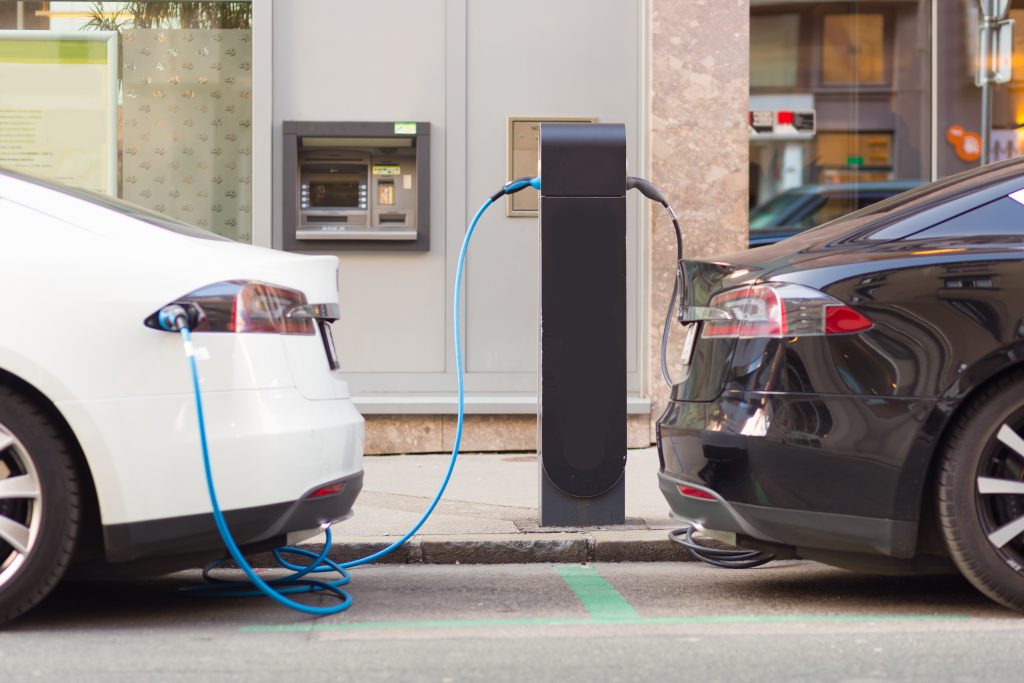
More EVs on the road makes sound environmental sense – they enable a 40% reduction in CO2 emissions – but ultimately the energy still has to come from somewhere. That means more power stations.
The scale of this new demand shouldn’t be underestimated: if European drivers were to go 80% electric, some studies have suggested it would require 150 GW of additional on-demand capacity – the equivalent of 40 Drax-sized power stations.
But if EVs are to live up to their green potential, that additional power needs to come from innovations in storage (such as in the Nissan example) and from renewable sources like wind, solar and biomass. Fossil fuels would ideally be used only to plug any gaps that intermittency creates – for example by briefly firing up the small gas power stations Drax plans to build in England and Wales.
Drax, as operator of the UK’s largest biomass power station and with plans for new, rapid response open cycle gas turbines (OCGTs), is well placed to be at the forefront of providing reliable, affordable power in the event of a widespread rollout of electric vehicles. The OCGTs in particular, are designed for use in peak times which, in the future, could be when the nation’s electric vehicles are plugged in overnight – today this is when electricity demand is at its lowest.
A future of more electric cars is a positive one. They’re cleaner, more efficient, and they are well suited to our increasingly urban lives. But now that we have the technology, we need to ensure we can deliver the lower-carbon infrastructure they need.

There’s more pressure than ever to reduce carbon dioxide emissions from electricity generation. And no one is keener than the team here at Drax Power Station to make it happen. In fact, we’ve been doing it for a decade. But we need the right support to finish the job.
And while many jobs in the North of England are being lost with the planned closure of a number of older coal-fired power stations, we continue to employ over a thousand people directly here in North Yorkshire.
In fact, it’s no exaggeration to say that Drax is a genuine Northern Powerhouse, to borrow a phrase from the Chancellor of the Exchequer.
Which is why we hope he and his colleagues in Government will listen when we say that we’re seriously concerned that the planned auctions for new green energy could result in bill payers missing out on savings of over £2 billion.
The Government has committed to three further renewable energy auctions that will happen over the next few years. The first of them is already planned for later in 2016.
As far as we know, those auctions will only be open to offshore wind and perhaps also something being referred to as ‘less established technologies’.
But independent research published by NERA and Imperial College London suggests that a ‘single technology’ approach could waste a significant amount of money.
The research was commissioned by Drax to establish the ‘true’ cost of the main renewable energy technologies – wind, solar and biomass.
As a result, economists conclude that hard working families and businesses could enjoy significant savings if these auctions were opened up to include other renewables.
But the sun doesn’t always shine and the wind doesn’t always blow. This makes wind and solar intermittent energy technologies. Backup power is needed when the weather’s not right or when demand is high.
Naturally, this standby energy isn’t free. Someone has to pay for it.
But those additional costs are not currently included in the way that the Government calculates how much support the different kinds of renewable energy require.
And the ICL/NERA research shows that when the true costs are added in, offshore wind is actually the most expensive form of renewable energy.
The affordable solution is to convert existing power stations to use compressed wood pellets in place of coal. This balanced approach also allows more offshore wind and solar onto our electricity network without the need for more fossil fuels to provide overall reliability. More biomass conversions can also help the UK end coal by Energy Secretary Amber Rudd’s 2025 target date.
That’s what we mean when we say Drax needs the right support to finish the job. We’re asking the Government to consider the true cost of bringing new renewable capacity on stream. And then to add sustainable biomass to the auctions for new contracts.
That decision could save bill payers up to £2bn. It could safeguard thousands of direct and indirect jobs in Yorkshire and the North of England. And it will give our country the reliable, renewable power we need when others just can’t deliver it.